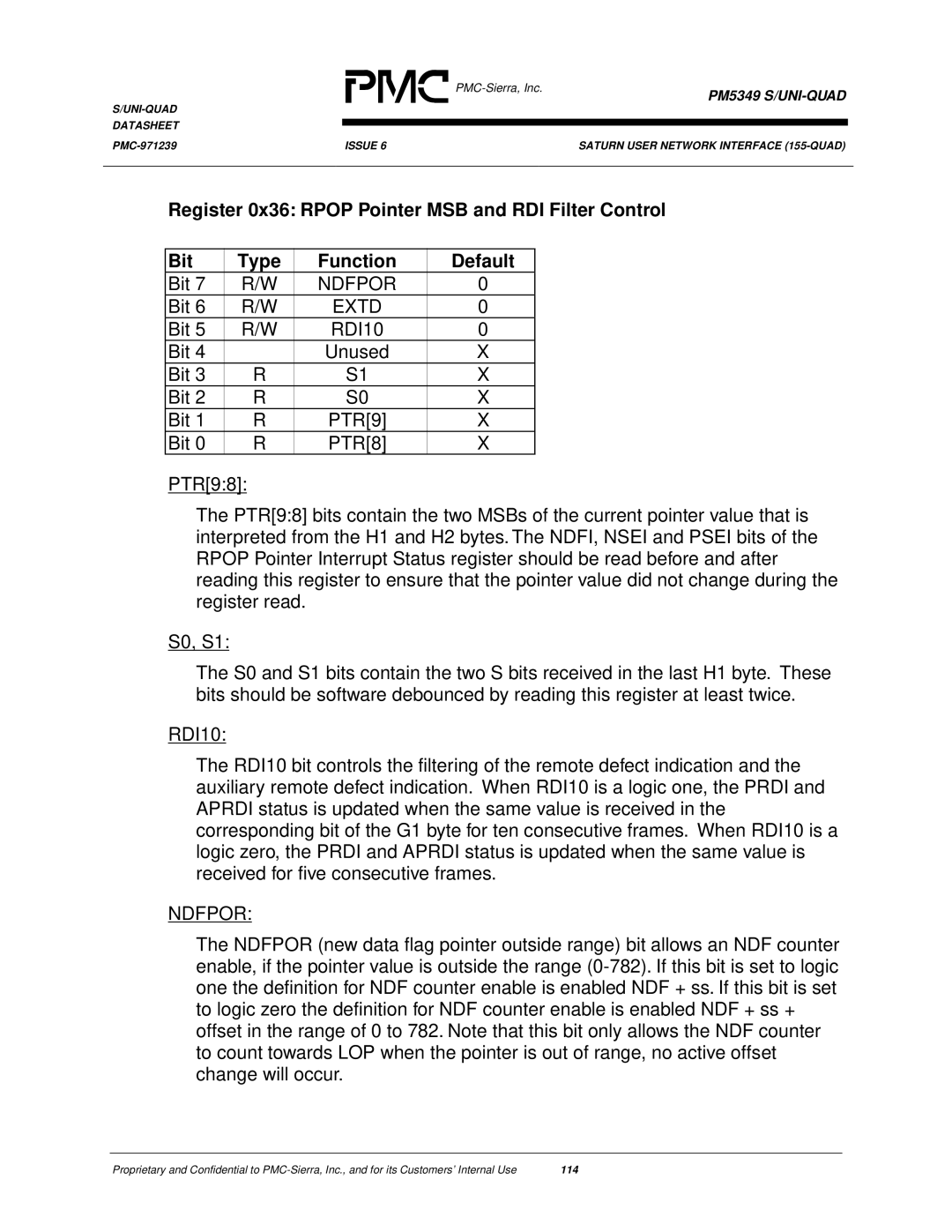
DATASHEET
PM5349 S/UNI-QUAD
ISSUE 6 | SATURN USER NETWORK INTERFACE | |
|
|
|
Register 0x36: RPOP Pointer MSB and RDI Filter Control
Bit | Type | Function | Default |
Bit 7 | R/W | NDFPOR | 0 |
Bit 6 | R/W | EXTD | 0 |
Bit 5 | R/W | RDI10 | 0 |
Bit 4 |
| Unused | X |
Bit 3 | R | S1 | X |
Bit 2 | R | S0 | X |
Bit 1 | R | PTR[9] | X |
Bit 0 | R | PTR[8] | X |
PTR[9:8]:
The PTR[9:8] bits contain the two MSBs of the current pointer value that is interpreted from the H1 and H2 bytes. The NDFI, NSEI and PSEI bits of the RPOP Pointer Interrupt Status register should be read before and after reading this register to ensure that the pointer value did not change during the register read.
S0, S1:
The S0 and S1 bits contain the two S bits received in the last H1 byte. These bits should be software debounced by reading this register at least twice.
RDI10:
The RDI10 bit controls the filtering of the remote defect indication and the auxiliary remote defect indication. When RDI10 is a logic one, the PRDI and APRDI status is updated when the same value is received in the corresponding bit of the G1 byte for ten consecutive frames. When RDI10 is a logic zero, the PRDI and APRDI status is updated when the same value is received for five consecutive frames.
NDFPOR:
The NDFPOR (new data flag pointer outside range) bit allows an NDF counter enable, if the pointer value is outside the range
Proprietary and Confidential to | 114 |
